Discover 35 hidden attractions, cool sights, and unusual things to do in Tehran (Iran). Don't miss out on these must-see attractions: Golestan Palace, Shams-ol-Emareh, and Azadi Tower. Also, be sure to include Eram Park in your itinerary.
Below, you can find the list of the most amazing places you should visit in Tehran (Tehran).
Table of Contents
Golestan Palace
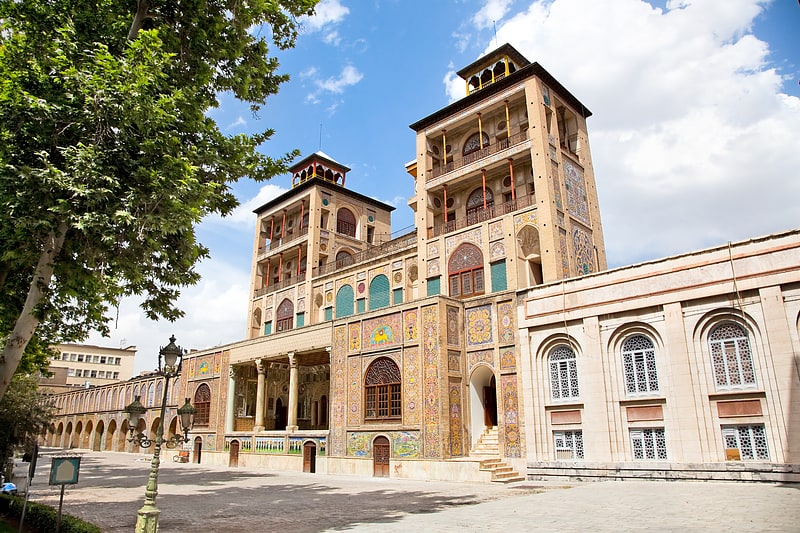
Also known as: کاخ گلستان
16th century palace and museum in citadel. The Golestan Palace, also known as the Gulistan Palace and sometimes known as the Rose Garden Palace, is the former royal Qajar complex in Iran's capital city, Tehran.
One of the oldest historic monuments in the city of Tehran, and of world heritage status, the Golestan Palace belongs to a group of royal buildings that were once enclosed within the mud-thatched walls of Tehran's arg ("citadel"). It consists of gardens, royal buildings, and collections of Iranian crafts and European presents from the 18th and 19th centuries.[1]
Address: Arq Suquare, 11369 Tehran
Shams-ol-Emareh
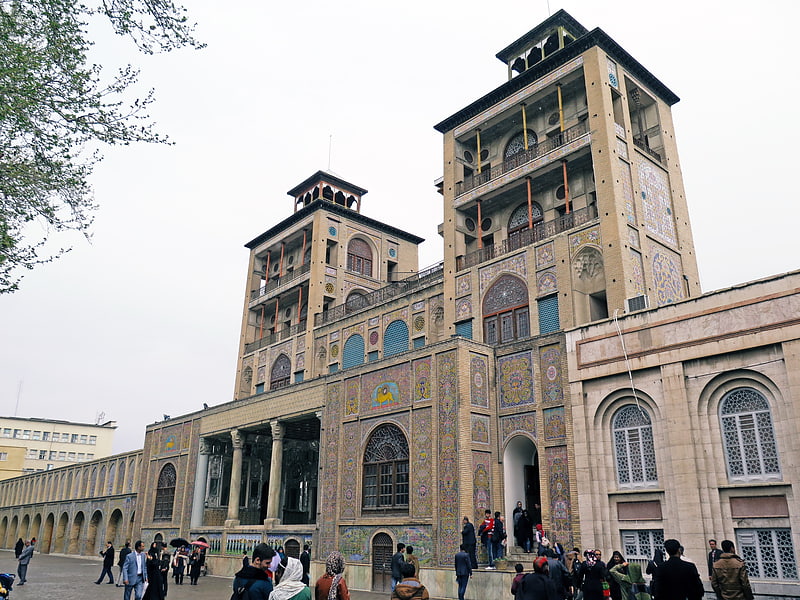
Building in Tehran, Iran. Shams-ol-Emareh is one of Tehran’s historical buildings and a remnant of Qajar Dynasty. It is one of the most prominent buildings on the east side of Golestan Palace. It was built around 1830. It is notable for its height, decorations and design.
Shams-ol-Emareh is 35 meters tall with five floors. It was the tallest building in Tehran when it was built, and the first building using metal in its structure. All the pillars in the upper floors are of cast iron. Shams-ol-Emareh was the symbol of Tehran before Sar dar Baghe Melli was built.[2]
Azadi Tower

Also known as: برج آزادی
Tower with museum and observation deck. The Azadi Tower, formerly known as the Shahyad Tower, is a monument located on Azadi Square in Tehran, Iran. It is one of the landmarks of Tehran, marking the west entrance to the city, and is part of the Azadi Cultural Complex, which also includes an underground museum.
The tower is about 45 metres (148 ft) tall and is completely clad in cut marble. It was commissioned by Mohammad Reza Pahlavi, the last Shah of Iran, to mark the 2,500-year celebration of the Persian Empire and completed in 1971.
After winning a competition, architect Hossein Amanat was tasked to design the tower. His ideas were based upon classical and post-classical Iranian architecture, popular influences on art in the 1960s following the White Revolution. Iran's increasing wealth sparked modernization programs and sent the art industry into a renaissance-like period.[3]
Address: Azadi Square, 11369 Tehran
Eram Park
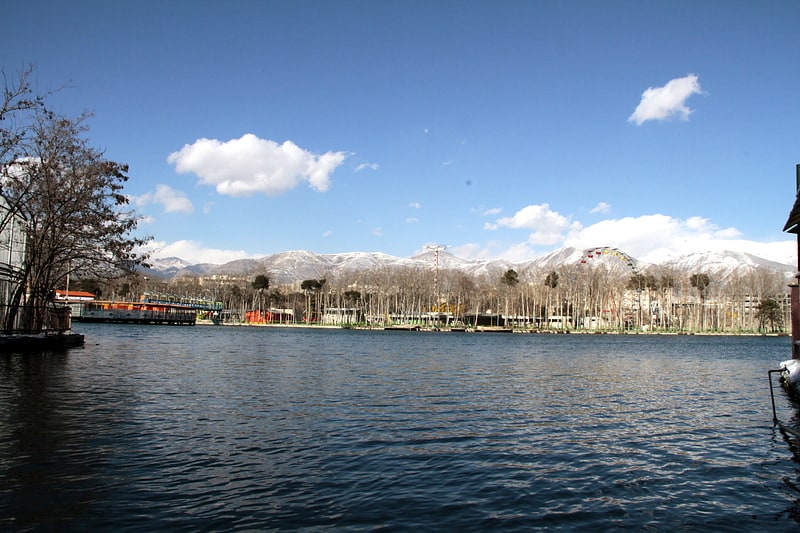
Also known as: پارک ارم
Theme park in Tehran, Iran. Eram Amusement Park, is the largest theme park in Iran. The park was established in 1972 by Assadollah Khoram, after whom the park was named until 1979. Eram Park is located on the Tehran–Karaj Freeway in Tehran province and covers an area of 70 hectares.
Eram Park consists of two lunaparks with 28 facilities with more than 120 devices for children and adults, Tehran Zoological Garden with more than 110 species, and an 8-hectare (20-acre) lake for barefoot skiing, cable skiing, canoeing, rowing, and kayaking. It also has various fast food restaurants, cafés, and other restaurants.[4]
Address: 4th km of Karaj Hwy., Tehran
Saadabad Palace

Official residence in Tehran, Iran. The Sa'dabad Complex is a 300 hectare complex built by the Qajar and Pahlavi monarchs, located in Shemiran, Greater Tehran, Iran. Today, the official residence of the President of Iran is located adjacent to the complex.
The complex includes more than 180 hectares of natural forest, streets, qanats, galleries, mansions/palaces and museums.[5]
Address: Shahid Fallahi (Zaferanieh), 11369 Tehran
Valiasr Street
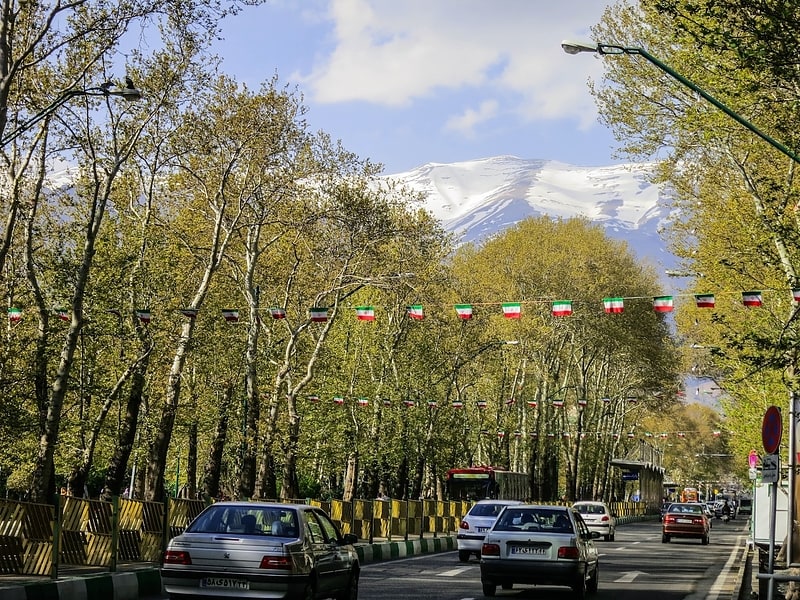
Also known as: خیابان ولیعصر
Street in Tehran, Iran. Valiasr Street or Pahlavi Street is a tree-lined street in Tehran, Iran, dividing the metropolis into western and eastern parts built in 1922 to 1927, considering the end of asphalt plan it ended in 1933. It is considered one of Tehran's main thoroughfares and commercial centres. It is also the longest street in the Middle East, and was reported as one of the longest in the world by former BBC journalist Rageh Omaar during the television documentary Welcome to Tehran.
The street was built by Reza Shah Pahlavi's order and called the Pahlavi Street. After the 1979 Islamic Revolution the street's name was changed initially to Mossadeq Street (in reference to former nationalist prime minister Mohammad Mossadegh) and later to Valiasr (a reference to the 12th Shi'ite Imam). This vibrant, hub-like street is lined with many shops, restaurants, parks and cultural centers are situated along this long avenue.[6]
Address: Valiasr St, Tehran
Milad Tower
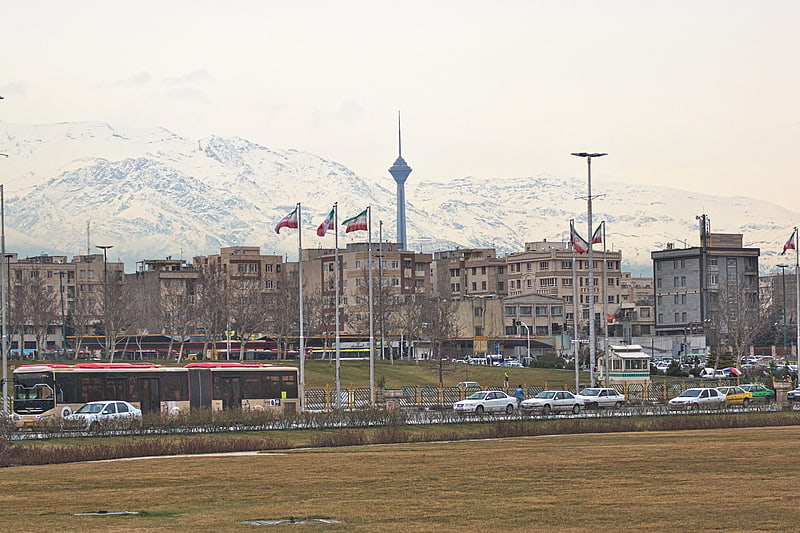
Also known as: برج میلاد
Iran's tallest tower, with viewing deck. Milad Tower, also known as the Tehran Tower, is a multi-purpose tower in Tehran, Iran. It is the sixth-tallest tower and the 24th-tallest freestanding structure in the world.
It is located between Gharb Town and the district of Gisha, standing at 435 meters from the base to the tip of the antenna. The head consists of a large pod with 12 floors, the roof of which is at 315 meters.
The tower is a part of the International Trade and Convention Center of Tehran, which also includes a five-star hotel, a convention center, a world trade center and an IT park.[7]
Address: Private Road of Milad Tower, Northern Angle of Hemmat Cross, 11369 Tehran
National Museum of Iran
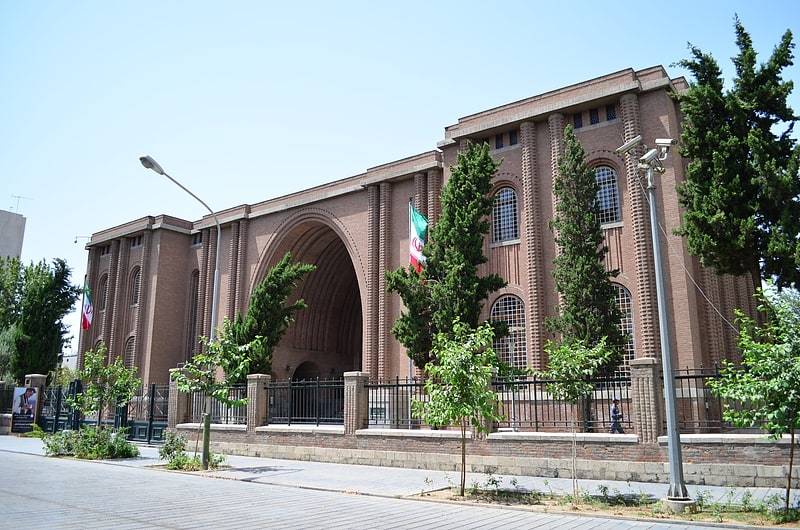
Also known as: موزه ملی ایران
Museum. The National Museum of Iran is located in Tehran, Iran. It is an institution formed of two complexes; the Museum of Ancient Iran and the Museum of Islamic Archaeology and Art of Iran, which were opened in 1937 and 1972, respectively.
The institution hosts historical monuments dating back through preserved ancient and medieval Iranian antiquities, including pottery vessels, metal objects, textile remains, and some rare books and coins. It also includes a number of research departments, categorized by different historical periods and archaeological topics.[8]
Address: Emam Khomeini Ave., 11369 Tehran
Grand Bazaar
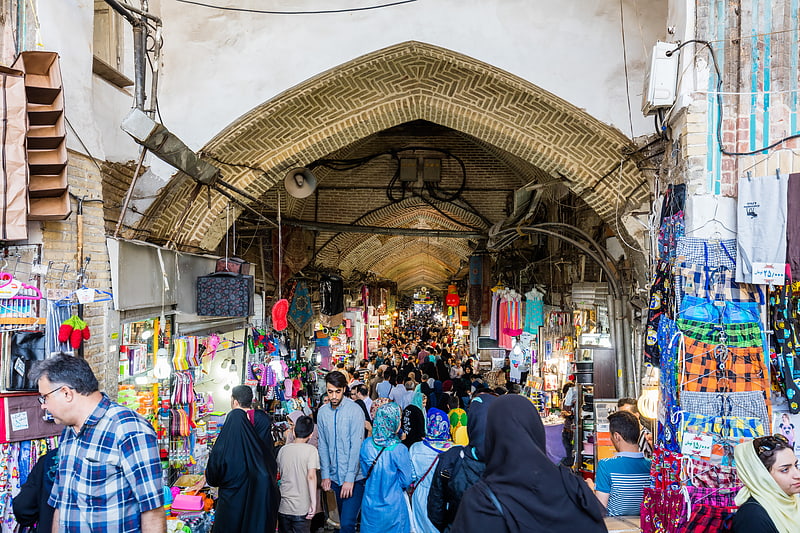
Also known as: بازار تهران
The Grand Bazaar is an old historical bazaar in Tehran, Iran. It is split into several corridors over 10 kilometres in length, each specializing in different types of goods, and has several entrances, with Sabze-Meydan being the main entrance.
In addition to shops, the Grand Bazaar contains mosques, guest houses, and banks. It has access to the rapid transit system of Tehran Metro through the stations of Khayam and Khordad 15th.[9]
Address: Panzdah Khordad St., Tehran
Mellat Park
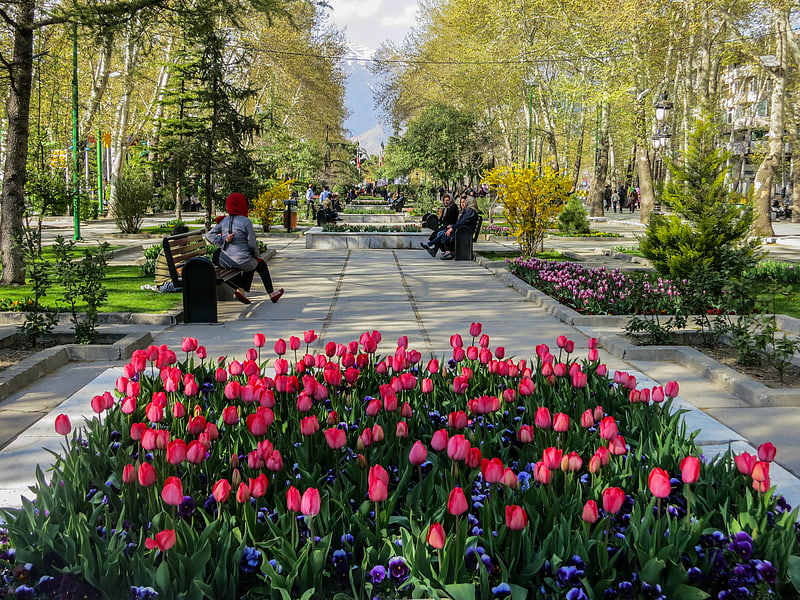
Also known as: بوستان ملت
Park with a musical fountain and more. Mellat Park, literally the Nation Park, is an urban park in northern Tehran, Iran.
It is one of the city's largest green spaces, situated adjacent to Valiasr Street at the foot of the Alborz mountains to the east, extending to Chamran Expressway and Seoul Street to the west. It is watered by winter-snow streams coming down from Mount Tochal.
The park lies in the southern grounds of Tehran International Fair and the Enghelab Club. It is home to one of the first musical fountains in Tehran, and includes facilities such as playgrounds, snack bars, cafes, and a small aviary. There is also a cineplex at the southeastern edge of the park.
Before the 1979 Revolution, it was known as the Imperial Park (پارک شاهنشاهی Pārk e Šāhanšāhi). It is also the location of a steam-powered locomotive used on Iran's first railway section, built between 1886 and 1888. The locomotive was built by Belgian group Ateliers de Tubize, commissioned in 1887.[10]
Address: Valiasr Ave., Tehran
Mausoleum of Ruhollah Khomeini

Also known as: حرم سید روحالله خمینی
Mausoleum. The mausoleum of Ruhollah Khomeini houses the tombs of Ayatollah Ruhollah Khomeini, his wife Khadijeh Saqafi, and his second son Ahmad Khomeini; and some political figures, such as former President Akbar Hashemi Rafsanjani, former Vice President Hassan Habibi, Lieutenant General Ali Sayad Shirazi, Iranian Revolution figure Sadeq Tabatabaei, and MP Marzieh Hadidchi. The mausoleum is located to the south of Tehran in the Behesht-e Zahra cemetery. Construction commenced in 1989 following Khomeini's death on June 3 of that year. It is still under construction, but when completed will be the centerpiece in a complex spread over 20 square kilometres, housing a cultural and tourist center, a university for Islamic studies, a seminary, a shopping mall, and a 20,000-car parking lot. The Iranian government has reportedly devoted 2 billion US dollars to this development.
The site is a place of pilgrimage for followers of Khomeini. It is used symbolically by government figures, and is on occasion visited by foreign dignitaries. Every year, Khomeini's death anniversary is marked on 4 June at the mausoleum in a ceremony that is attended by governmental officials, foreign ambassadors, and others. Khomeini's grandson Ayatollah Seyyed Hassan Khomeini is in charge of caring for the mausoleum. The Haram-e Motahhar Metro Station is the closest metro station to the mausoleum.[11]
Museum of Anthropology Tehran
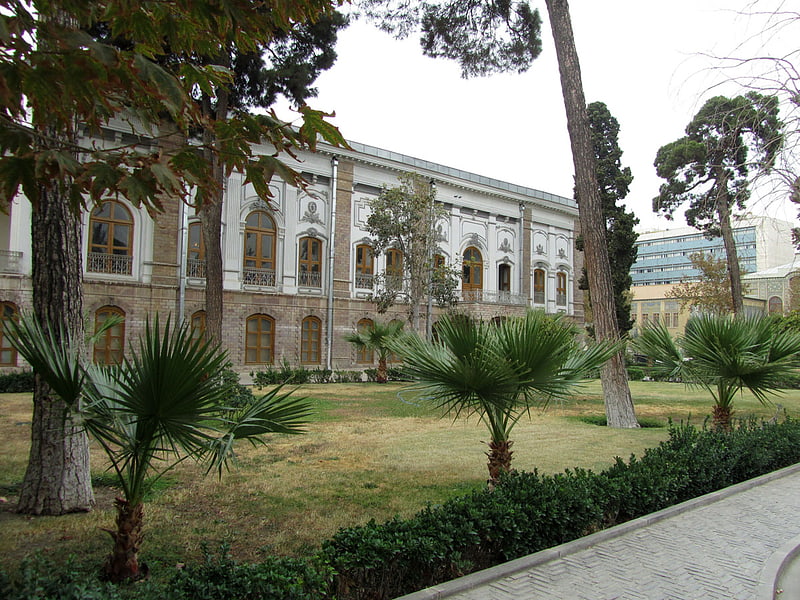
Museum of Anthropology is one of the museums in Tehran province. It was founded in 1935 and houses works created by people from different cities of Iran during the Qajar Dynasty and afterwards.
In 1968, the Museum of Anthropology was transferred from its former place in Abyaz Palace to Golestan Palace. The museum has workshops for calligraphy, photography, sculpture, carpentry as well as a library with a reading room. There are also a lecture hall and forty-seven booths for works assembled from all over Iran. Relics in the museum are classified and displayed in a thematic way. This museum is located in Golestan Palace.[12]
Jamshidieh Park
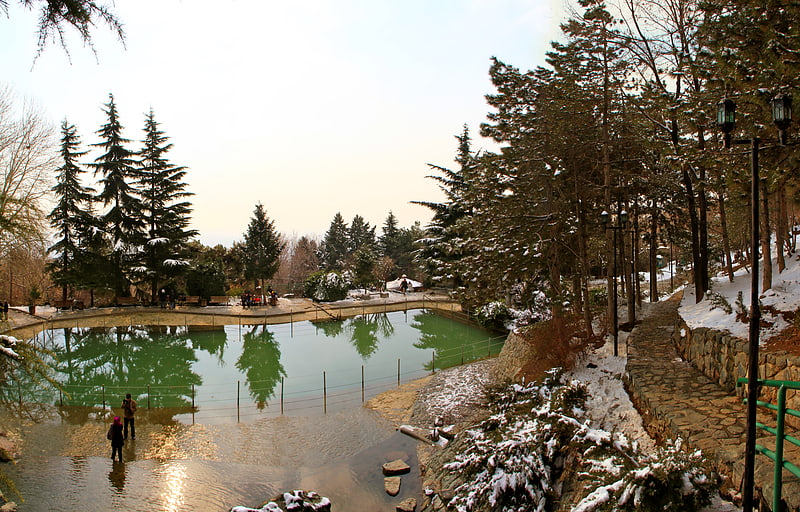
Also known as: بوستان جمشیدیه
Scenic park with a pond and waterfall. Jamshidieh Park, is a park located in the neighbourhood of Niavaran at the base of Kolakchal mountain.[13]
Address: Omidvar St., Tehran
Tehran Zoological Garden
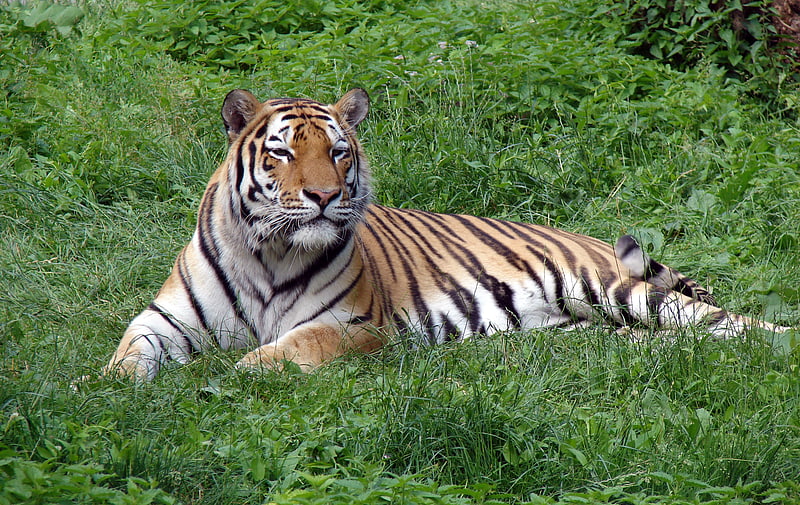
The Tehran Zoological Garden, also known as "Eram Zoo", is located 4 km on the Tehran–Karaj Freeway in the Eram Amusement Park, Tehran province, Iran. Inaugurated in 1992, the zoo covers an area of 4.5 ha and houses over 290 species.[14]
Mausoleum of Reza Shah
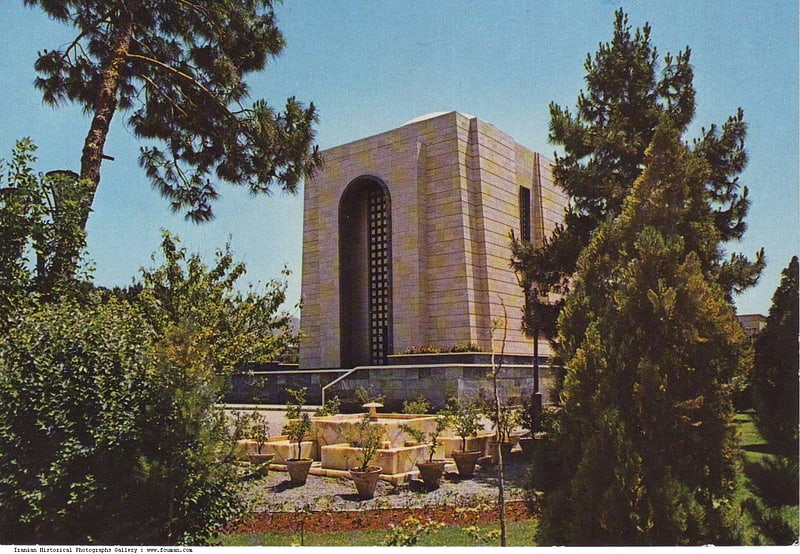
Burial ground. The mausoleum of Reza Shah, located in Ray south of Tehran, was the burial ground of Reza Shah Pahlavi, the penultimate Shahanshah of Iran. It was built close to Shah-Abdol-Azim shrine.
In addition to Reza Shah, his son, Prince Ali Reza, was also buried here. The prince who was Mohammad Reza Shah's only full brother, was a pilot and crashed in the Alborz Mountains on October 17, 1954. When the mausoleum was destroyed, no one found the prince's body.
In the early days of the Iranian Revolution in April 1980, Reza Shah's mausoleum was destroyed under the direction of Ayatollah Sadegh Khalkhali by Revolutionary Guards; In his memoirs, Khalkhali describes how difficult it was to destroy the building due to its solid structure. Revolutionaries were unable to find Reza Shah's dead body and suggested that Mohammad Reza Shah had taken it with him while leaving Iran, a claim which was denied by Shahbanu (Empress) Farah Pahlavi in an interview. On April 23, 2018, a mummified body, possibly that of Reza Shah, was found during expansion work at Shah Abdol-Azim Shrine at the site of the former mausoleum.[15]
Sabet Pasal
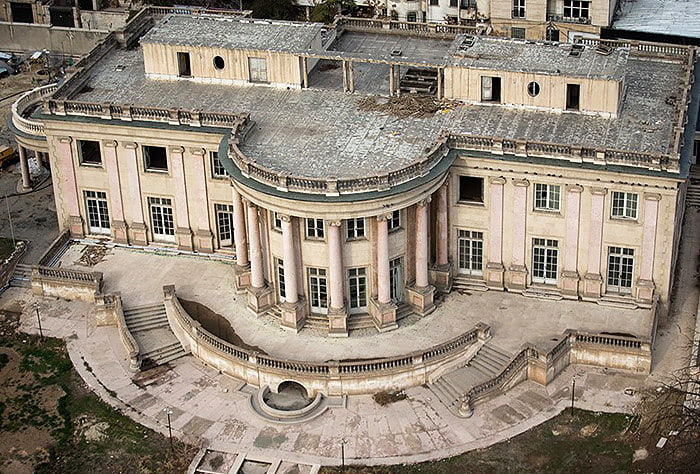
Sabet Pasal is a historic palace located north of Nelson Mandela Boulevard in Tehran in Iran. Nicknamed the "Stone Palace" and "Iran's palace of Versailles", it is Tehran's largest historical house.[16]
Sa'dabad Palace
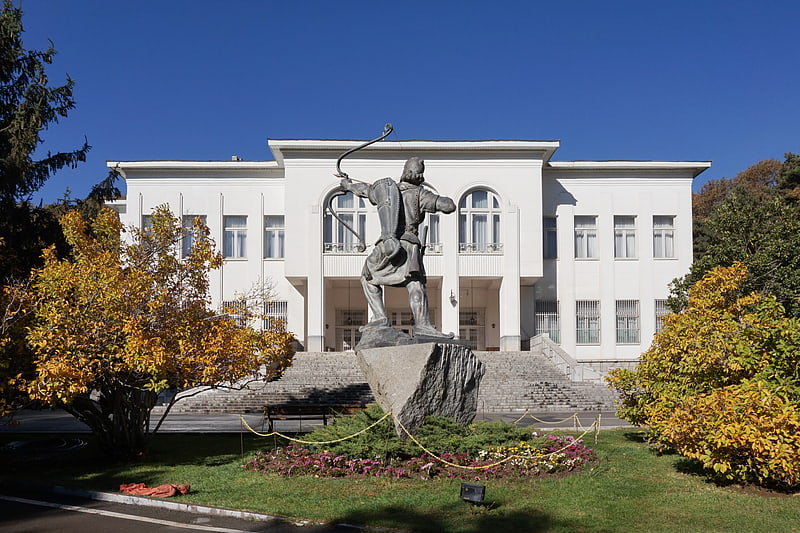
Also known as: کاخموزه سعدآباد
Sprawling area with many museums. The Sa'dabad Complex is a 300 hectare complex built by the Qajar and Pahlavi monarchs, located in Shemiran, Greater Tehran, Iran. Today, the official residence of the President of Iran is located adjacent to the complex.
The complex includes more than 180 hectares of natural forest, streets, qanats, galleries, mansions/palaces and museums.[17]
Address: Tehran, Darband, Zafaraniyeh, Tajrish, Valiasr Street
Iranian Crown Jewels
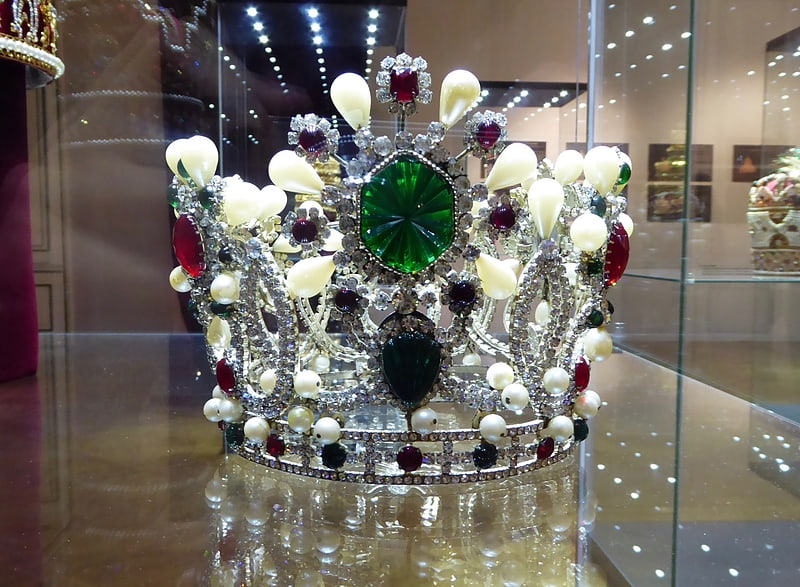
Also known as: جواهرات ملی ایران
The Iranian National Jewels, originally the Iranian Crown Jewels, include elaborate crowns, thirty tiaras, and numerous aigrettes, a dozen bejeweled swords and shields, a number of unset precious gems, numerous plates and other dining services cast in precious metals and encrusted with gems, and several other more unusual items collected or worn by the Persian monarchs from the 16th century and on. The collection is housed at the Treasury of National Jewels, situated inside the Central Bank of Iran on Tehran's Ferdowsi Avenue.[18]
Address: Ferdosi St (فردوسی), near the corner of Jomhuriyeh Eslami Ave, Tehran
Saints Thaddeus and Bartholomew Church of Tehran
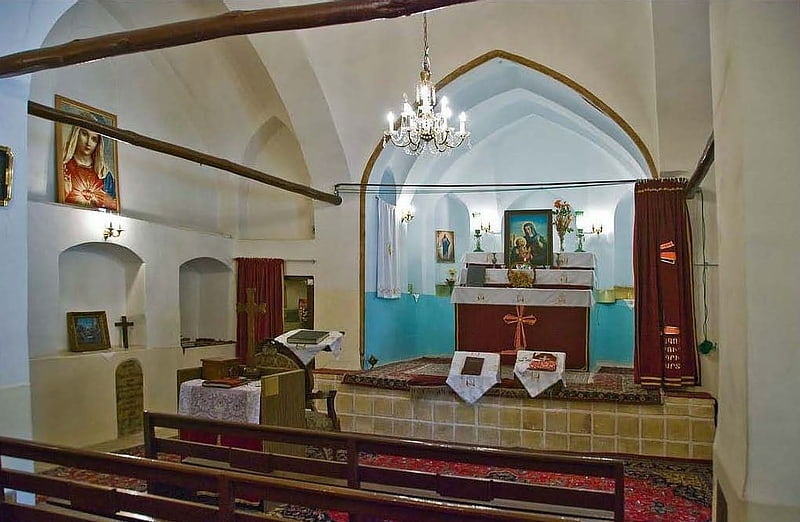
Saints Thaddeus and Bartholomew Church of Tehran, is an Armenian Apostolic church in Tehran, Iran. It is the oldest church in Tehran.[19]
Reza Abbasi Museum
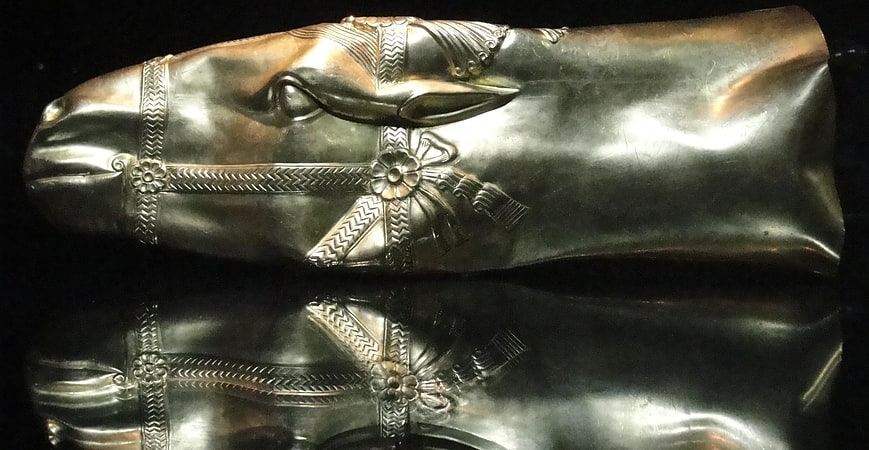
Also known as: موزه رضا عباسی
Museum in Tehran, Iran. The Reza Abbasi Museum is a museum in Tehran, Iran. It is located in Seyed Khandan. The museum is named after Reza Abbasi, one of the artists in the Safavid period. The Reza Abbasi Museum is home to a unique collection of Persian art dating back to the second millennium BC, from both the pre-Islamic and Islamic eras.[20]
Address: 972 Shariati Street, 11369 Tehran
Niavaran Palace
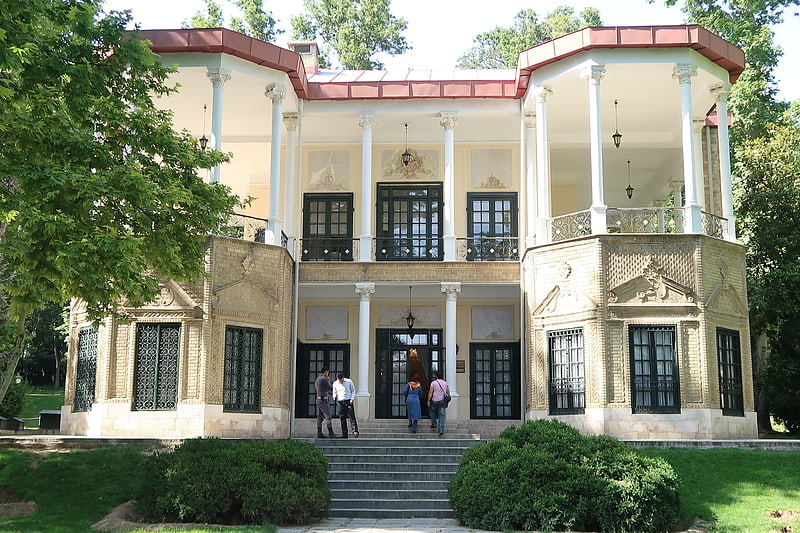
Also known as: کاخ نیاوران
Palace complex with museums and libraries. The Niavaran Palace Complex is a historical palace complex situated in Shemiran, Iran. It consists of several palace buildings and monuments dating back to the Qajar and Pahlavi eras.[21]
Address: Pourebtehaj/Pvrabthaj (پورابتهاج), Tehran
Grand Mosalla mosque of Tehran
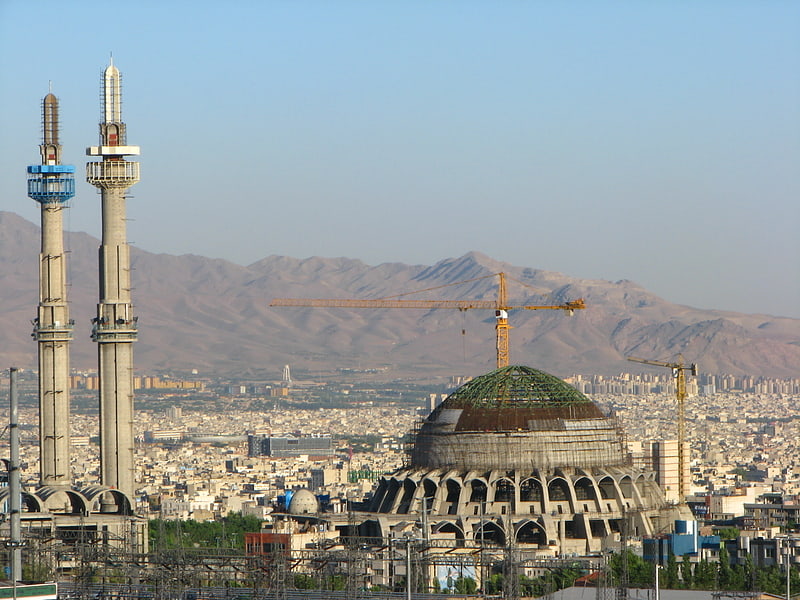
Grand Mosalla mosque of Tehran is a location for holding weekly Friday prayer and cultural, political, educational, worship activities including book fairs and religious ceremonies.[22]
Laleh Park

Also known as: بوستان لاله
Park in Tehran, Iran. Laleh Park, is a large recreation area of the Iranian capital Tehran. Laleh is the Persian word for tulip, which is also a popular symbol in Iranian culture.
The park is well-kept and has green areas adjacent to Keshavarz Boulevard in the south, The Ministry of Agriculture in the east, Iran's National Carpet Museum to the northwest, and the Tehran Museum of Contemporary Art in the west.
This park (one of c. 800 parks in Tehran) lies in central Tehran and north of Tehran University. Laleh Park is one of the biggest parks in Tehran.
Laleh Park provides pathways for walking and shade for picnics and relaxation. The park has become a popular meeting place for young people and a picnic area for families. Around the park are some popular coffee shops, fast-food outlets, and shopping centres and designer boutiques in nearby Valiasr Square.[23]
Address: North Kargar Street, 11369 Tehran
Tehran Museum of Contemporary Art

Also known as: موزه هنرهای معاصر تهران
Art museum in Tehran, Iran. Tehran Museum of Contemporary Art, also known as TMoCA, is among the largest art museums in Tehran and Iran. It has collections of more than 3,000 items that include 19th and 20th century's world-class European and American paintings, prints, drawings and sculptures. TMoCA also has one of the greatest collections of Iranian modern and contemporary art.
The museum was inaugurated by Empress Farah Pahlavi in 1977, just two years before the 1979 Revolution. TMoCA is considered to have the most valuable collections of modern Western masterpieces outside Europe and North America.[24]
Address: N Kargar St, Tehran, Iran, 11369 Tehran
Arjantin Square
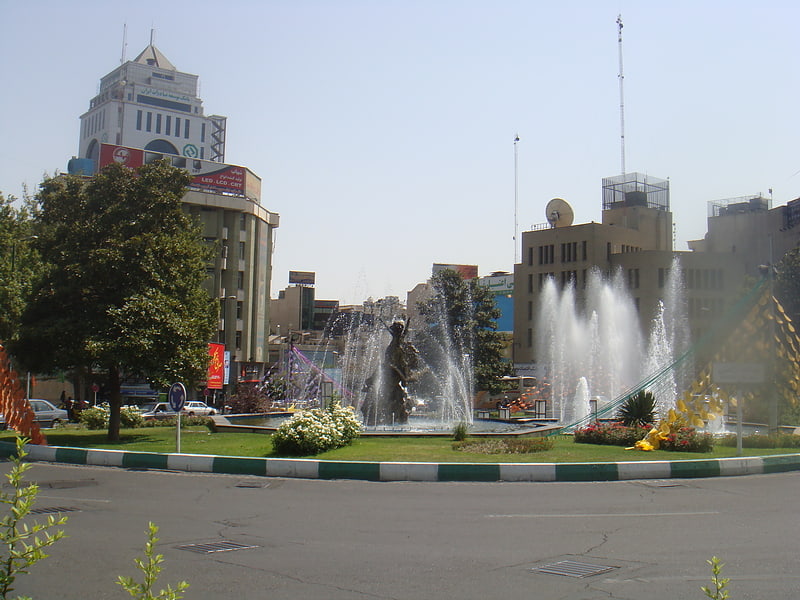
Arjantin Square is a square in north central Tehran. The area surrounding the square is referred to as Yousefabad although this is an incorrect title. The area around the large square is home to a collection of embassies, businesses, Medical labs, hospitals and the Arjantin Beihaghi Bus Terminal, which is central Tehran's main national bus terminal.[25]
Address: Argentine Square, Tehran
Abgineh Museum of Tehran
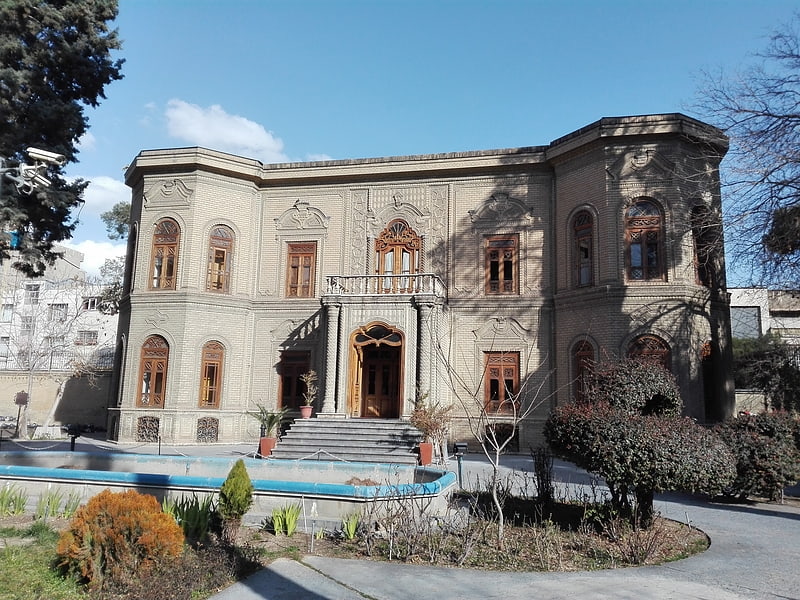
Also known as: موزه آبگینه و سفالینه
Museum in Tehran, Iran. The Glassware and Ceramic Museum of Iran or simply Abgineh Museum is located at 30 Tir Street, in Tehran, Iran. It was private residence of longtime Prime Minister Ahmad Qavam from 1921 until 1951. The complex was also Embassy of Egypt for seven years.[26]
Address: No. 75, 30 Tir St, 11369 Tehran
Holy Defense Museum
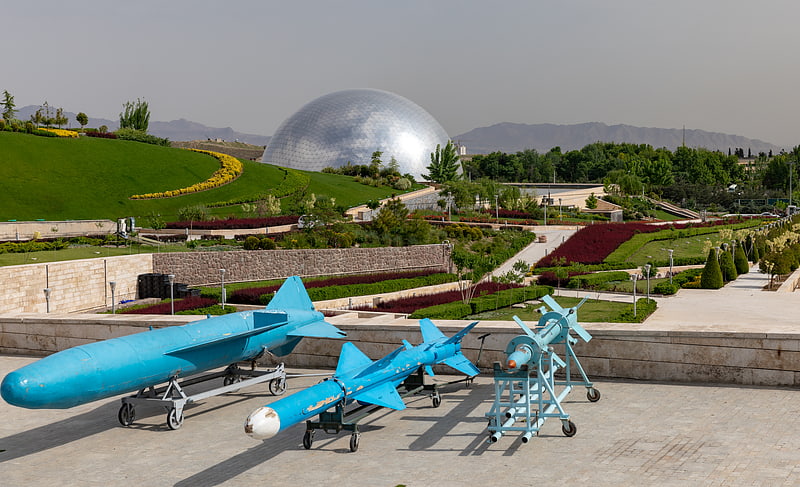
The National Museum of the Islamic Revolution and Holy Defense, located in Tehran on a landscaped site of 21 hectares, is one of the largest museums of Iran. It is dedicated to the Iran–Iraq War, the conflict known in Iran as "imposed war" or mainly "Holy Defense". The museum consists of different parts such as Tomb of the Unknown Soldiers, flag tower, open area and lake, Parking, conference halls, Khorramshahr Mosque, Library and Panorama museum. The main building of museum consists of 8 halls; each displays a specific concept of war through many monitors, video projectors, hologram showcases and some other modern technologies.[27]
Tabiat Bridge
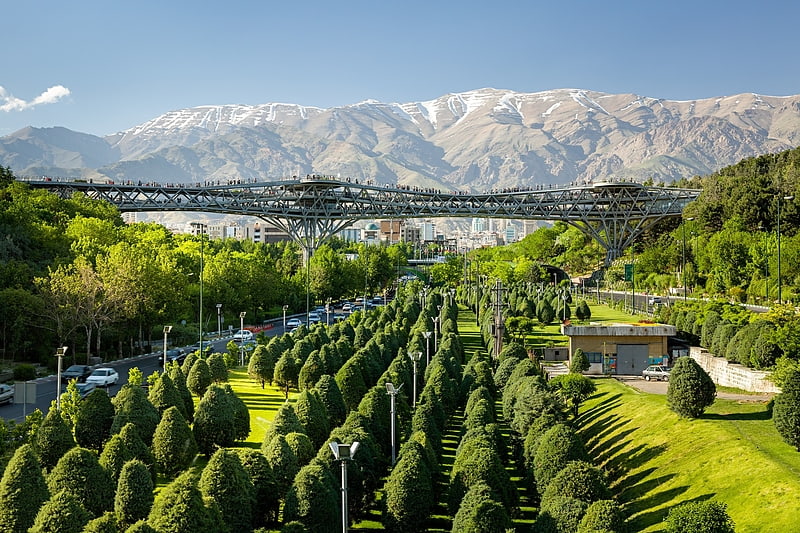
Also known as: پل طبیعت
Pedestrian bridge in Tehran, Iran. The Tabi'at Bridge is the largest pedestrian overpass in Tehran, Iran. The 270-metre bridge connects two public parks — Taleghani Park and Abo-Atash Park — by spanning Modarres Expressway, one of the main highways in northern Tehran. The word tabiat means "nature" in the Persian language.
The bridge was designed by Diba Tensile Architecture (Leila Araghian and Alireza Behzadi). It has won several awards, including the Popular Choice Prize for Highways & Bridges from the Architizer A+ Awards, a global architectural competition based in New York. The bridge also won the 2016 Aga Khan Award for Architecture for its exemplary approach to an infrastructure project, "a breath of fresh air" according to the award jury.[28]
Address: Modarres Highway, 11369 Tehran
Sepahsalar Mosque
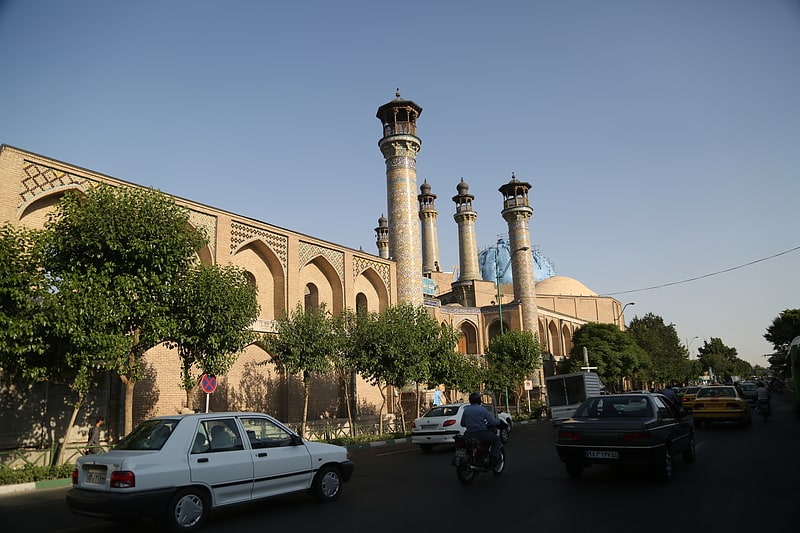
Also known as: مسجد سپهسالار
Mosque in Tehran, Iran. The Sepahsālār Mosque is a famous historic mosque in Tehran, Iran. The construction project of the mosque was started in 1879 upon the order of Mirza Hosein Sepahsalar, the Premiers of Iran during Naser al-Din Shah Qajar, and the first phase of construction was finished after five years since it was started. The mosque was renamed the Shahid Motahhari, after the 1979 Iranian Revolution, but it is commonly known as its initial name of Sepahsalar Mosque.
The Sepahsalar Mosque is one of the largest Mosque in Tehran. During the late Qajar as well as Pahlavi era, Sepahsalar mosque was distinctive landmark of Tehran with its eight minarets which was unique in Persian design of mosques.
The mosque is located southeast of Baharestan square, next to the former National Consultative Majlis of Iran.[29]
Address: Jomhuri Ave, 11369 Tehran
Behesht-e Zahra
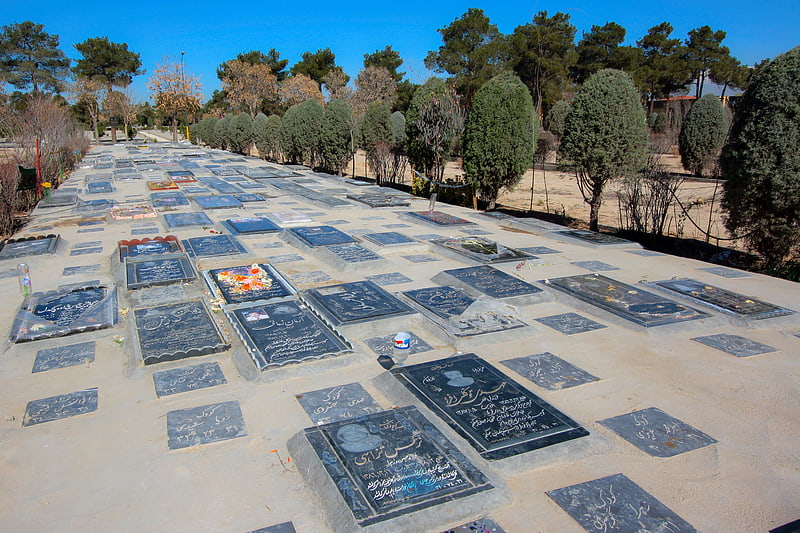
Also known as: بهشت زهرا
Cemetery in Iran. Behesht-e Zahra is the largest cemetery in Iran. Located in the southern part of metropolitan Tehran, it is connected to the city by Tehran Metro Line 1.[30]
Jamaran Hussainiya
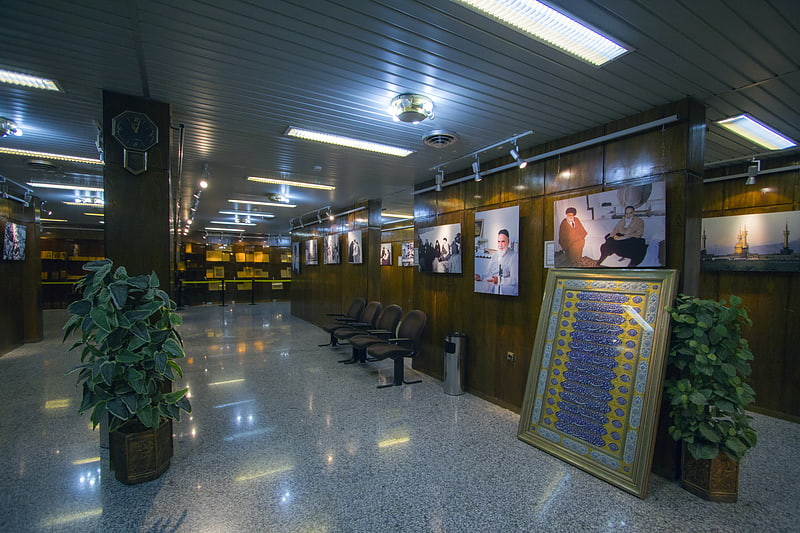
Also known as: حسینیه جماران
Historical landmark in Tehran, Iran. Jamaran Hussainiya was the house of Ruhollah Khomeini, the founder of the Islamic Republic of Iran, in Jamaran village. On 23 January 1980, Ayatollah Khomeini went to Tehran from Qom to cure a heart ailment. According to doctors recommendation, the weather of Qom did not agree with him. The house of Khomeini was next to the Hussainiya in Jamaran village. The house was very small and his room was 12 square meters. The house was linked to a large mosque by a metal platform. Khomeini often walked up a flight of stairs leading from his house to the balcony of the mosque, from which he often spoke.[31]
Marble Throne
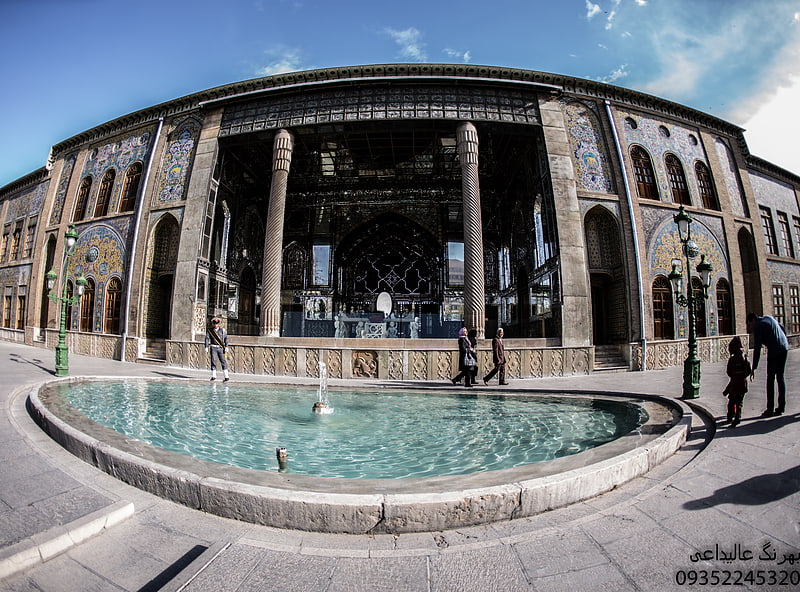
Also known as: تخت مرمر
The Marble Throne is a 250-year-old royal throne in Golestan Palace, Tehran, Iran.
The throne was built from 1747 to 1751. It was designed by Mirza Baba Shirazi (Naqqash Bashi) and royal stonecutter, Mohammad Ebrahim Esfahani. It consists of 65 marble stone pieces from a mine in Yazd. The throne's supports are carved in the shape of men, women, fairies, and demons.
The Royal Balcony of the Marble Throne is said to be built during the reign of Karim Khan Zand, but Karim khan is known to have even refused the title king, and preferred to sit on a carpet rather than a throne so his ownership of the Marble throne is unlikely. It was changed several times during the Qajar period. The twin stone columns of the balcony were transferred to Tehran, by the order of Agha Mohammad Khan, from Shiraz.
The Sun Throne was probably modelled after it.[32]
Ministry of Interior Hall
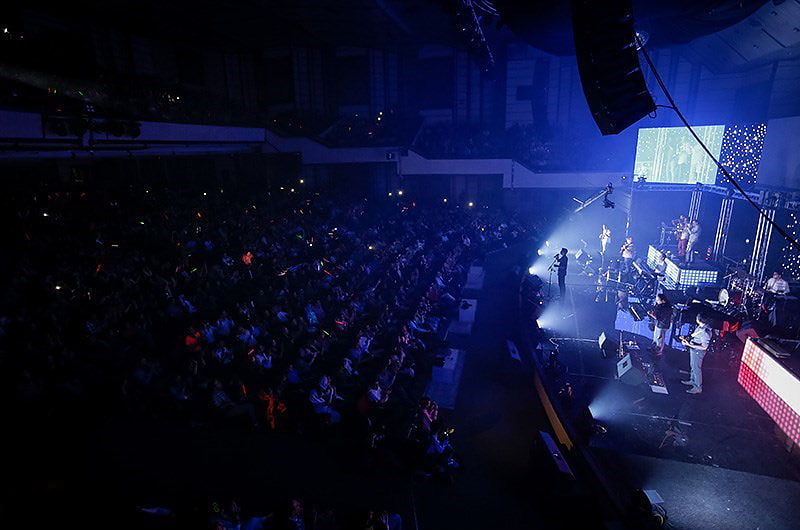
Ministry of Interior Hall, is a concert hall in Tehran. Its one of the most important concert halls in Tehran.[33]
Malek National Museum and Library

Also known as: کتابخانه و موزه ملی ملک
Museum in Tehran, Iran. Malek National Museum and Library is a museum and national library in Tehran, Iran. Malek National Library and Museum Institution is the first private museum of Iran, and one of the 6 large libraries holding the exquisite manuscripts. The MNLMI collection is a rich trove of the best manuscripts and Iranian historical artworks. The Institution is located in the historical precinct of “Bagh-e Melli”, that is considered the cultural-historical center of Tehran. Usually, the MNLM visitors are numerous university students and researchers, as well as tourists who enjoy its library and museum facilities. It is one of the biggest libraries of precious manuscripts in Iran, built by Hadji Hussein Agha Malek, the richest man in Iran at the time. He built it in a traditional Persian architecture style. One of the biggest contributors is Esat Malek Malek, Hadji Hussein Agha Malek's eldest daughter, who contributed to the museum's development.[34]
Address: Melal-e Mottahed Street, 11369 Tehran
Vahdat Hall
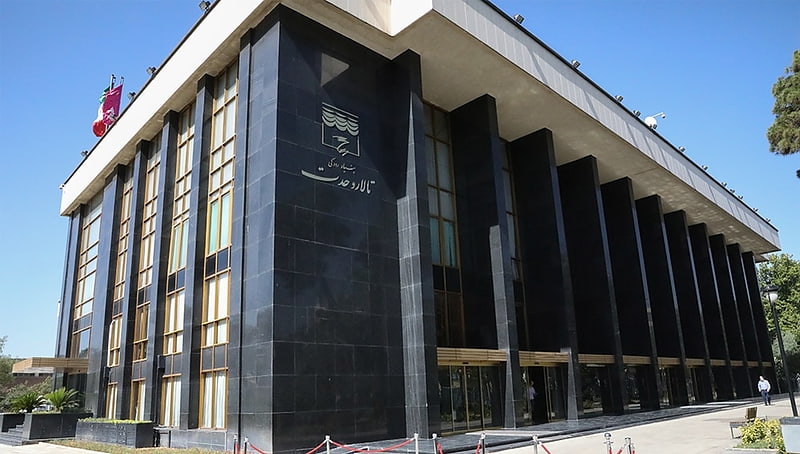
Also known as: تالار وحدت
Performing arts theater in Tehran, Iran. The Vahdat Hall, formerly the Roudaki Hall, is a performing arts complex in Tehran, Iran.[35]